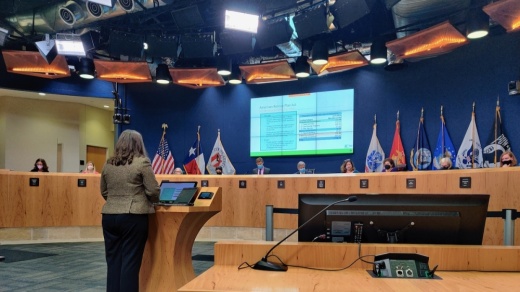Plans shared with Austin City Council on Oct. 21 show $266 million of the $515 million Summit Plan will be spent on building new housing over the next two years, before dropping off to zero in year three. Conversely, about $218 million for housing and support services will increase from $38 million in year one to $75 million in year two and then to $105 million in year three as housing options broaden.
That progression mirrors the path that Austin's homeless strategy has taken in recent years, Homeless Strategy Officer Dianna Grey said, and it is why more visible housing results have not yet materialized.
"The fundamental issue in our community is not our investment. ... It is that we have not come to scale to meet the size of the problem," Grey said.
Matt Mollica, executive director of the Ending Community Homelessness Coalition nonprofit, echoed Grey's assertion that the city's spending on homelessness is working but needs expansion through the Summit Plan.
"This false idea that the interventions are not working is at the root of the critical nature that’s been around homelessness over the last couple years. The data that we have shows that the interventions work. Right now, this is a scale issue and an affordability issue," Mollica said.
The Summit Plan's launch this spring came with a general timeline for housing progress leading up to spring 2024, with periodic markers to track how many people are moved into housing. The first goal, to house 100 people through June, fell short with only 79 housings as of June 30.
Summit leaders have not provided an update on the second target of 200 housings through August, although the rate of housing is speeding up, they said.
“We have seen increases in the number of folks who are gaining access to our permanent housing programs, and the reason for that is because the investments that have been made so far around the Summit Plan are in permanent housing programs. So we have seen those impacts happen there," Mollica said. "As these other investments roll in, we’ll see other areas in the system impacted and expect to see similar gains on increasing the number of people housed above our steady state as the new resources take hold.”
Mayor Steve Adler also said he expects the first year-plus of the Summit Plan may show slow progress. But with an end goal of connecting more than 3,000 people with housing, he also said he is focused more on near-term process than results.
“I am not as concerned about hitting those [short-term] marks because they’re not long-term marks. Quite frankly, the quality of where people move is more important to me than that they move," Adler said. "The marker for us right now is, are we actually going to house 3,000 people incrementally in three years? Are we going to successfully set up this system so that we don’t have gaps so that it actually works? Then the next one is, are we setting up a system that is more equitable and fair and just than the one we have now?"
Grey said the bulk of housing will take place from mid-2022 into 2024 as more funds are spent and new spaces open up. And a portion of the Summit Plan is also centered on data collection to keep up with its goals, an aspect highlighted by officials during Grey's briefing.
“The bottom line is, we have to be able to measure results. We have to know that what we’re doing is producing what we’re actually trying to achieve," Council Member Ann Kitchen said.
Next steps in the process will involve spending more of the millions Austin has dedicated to the regional homelessness push. Grey said as of mid-October, only around $5 million of the city's American Rescue Plan Act funding had been used on the Summit Plan for hotel purchases—a strategy the city has expanded on in recent months for housing and shelter space.
“Now we actually have the resources that are available at levels we’ve never had before. We have a system that we can actually build out so that there are no gaps, and we have the unity of the leadership and the players and the stakeholders in the community unlike anything that we have ever seen," Adler said.





